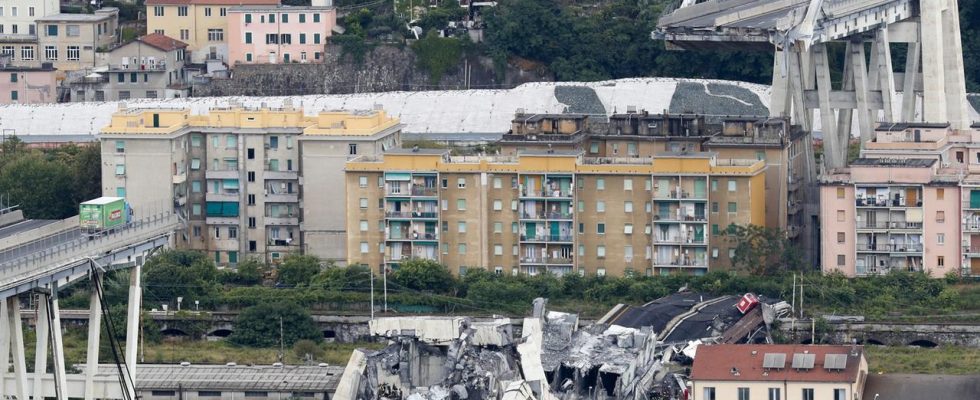The Italian port city of Genoa commemorates 43 people who died when a bridge collapsed five years ago. A tragedy that most likely could have been prevented.
The spokeswoman for the bereaved seems determined. “I – we won’t give up because it’s too important a fight,” says Egle Possetti. It is important for all Italian citizens because it is “a fight against grievances” and “a fight against inefficiency, arrogance and greed”.
Possetti lost her sister, brother-in-law, niece and nephew in the accident. She fights for them and the 43 victims, wants to bring the truth to light. Why back then, on August 14, 2018 at 11:36 a.m., the middle section of the motorway bridge in Genoa crashed, taking cars and trucks with it.
“Oh Dio, oh Dio!” The cries of horror of the eyewitnesses have burned deep into the memory of Italy. On that day, a violent storm swept over the Ligurian port city, and the motorway operator initially suspected that lightning had struck a carrier. But gradually it became clear that the accident was self-inflicted.
Experts convinced of damage
In May, a long-time CEO of the responsible Benetton Holding testified in the courtroom. Accordingly, according to Gianni Mion, safety deficiencies on the bridge were already known in 2010, so the danger of collapse was known. “We didn’t do a lot of things that we should have done. That was stupid. But we just didn’t do it.”
The bridge, which was inaugurated in 1967, came to the Benetton family’s company empire at the end of the 1990s, since the responsible motorway company ASPI was privatized. According to his own statements, ex-manager Mion is very reproachful today for not doing anything at the time. He is one of 59 defendants who have had to answer before the court in Genoa since the summer of last year – among them are managers, technicians and state supervisors.
Experts are convinced that damage caused the collapse. Damage that has not been discovered for years due to lack of maintenance. Or deficiencies that were already known in the early 1990s but have not been remedied.
compared with highway company
For the bereaved, the judicial processing is immensely important, according to Egle Possetti. “The commitment that we see in this first instance is really great, the indictment is enormous,” she says. So there is a bit of trust. “But since we’re in Italy, we don’t have full confidence until the end. Unfortunately, many cases have ended badly so far.”
For example, a statute of limitations could occur before the end of the procedure. In addition, responsibilities are shifted back and forth. The highway company is no longer in the dock after negotiating a settlement with the state.
She paid millions in compensation to the bereaved, and she also paid for the demolition and construction of the bridge. It was designed by the Genoese star architect Renzo Piano and was inaugurated in the summer of 2020.
For the inauguration, the new San Giorgio Bridge was illuminated in the Italian national colors.
Ceremonies commemorate misfortune
The bridge expert Settimo Martinello thinks that the motorway bridges in Italy are controlled more intensively today than they were five years ago. “Today they have to do this with a methodology that is national. All data has to be transmitted to the ministry with a certain frequency,” he says. “So there is certainty that the inspections are being carried out with a methodology that is no longer the one that was the cause of all events.”
On the fifth anniversary, Italy is commemorating the tragedy with several ceremonies and commemorating the 43 men, women and children whose deaths could have been prevented.

